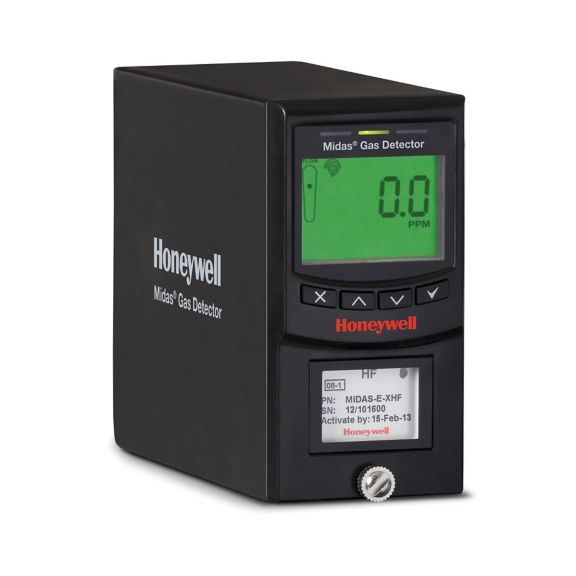Python ≥3.8 driver for Honeywell Midas gas detectors.
pip install midas
To test your connection and stream real-time data, use the command-line interface. You can read the state with:
$ midas 192.168.1.100
This will output a JSON object which can be further manipulated. See below for object structure.
For more complex behavior, you can write a python script. This solely uses Python ≥3.5's async/await syntax.
import asyncio
from midas import GasDetector
async def get():
async with GasDetector('192.168.1.100') as detector:
print(await detector.get())
asyncio.run(get())If the detector is operating at that address, this should output a dictionary of the form:
{
'alarm': 'none', # Can be 'none', 'low', or 'high'
'concentration': 0.0, # Current gas concentration reading
'connected': True, # Monitors heartbeat for connection
'fault': { # Fault data, when applicable
'code': 'F39',
'condition': 'User has generated a simulated fault.',
'description': 'Simulated fault',
'recovery': 'Reset simulated fault.',
'status': 'Instrument fault'
},
'flow': 514, # Flow rate, in cc / minute
'high-alarm threshold': 2.0, # Threshold concentration for high alarm trigger
'ip': '192.168.1.192', # IP address of connection, can be used to link to Honeywell's own web interface
'life': 538.95, # Days until cartridge replacement required
'low-alarm threshold': 1.0, # Threshold concentration for low alarm trigger
'state': 'Monitoring', # Can be any option in `gas_detector.monitoring_status_options`
'temperature': 26, # Detector temperature, in celsius
'units': 'ppm' # Units for concentration values
}Additionally, there are four commands which can be sent to the device
- Clear all alarms and faults -
detector.clear_alarms_and_faults() - Inhibit alarms -
detector.inhibit_alarms() - Inhibit alarms and faults -
detector.inhibit_alarms_and_faults() - Turn off inhibition -
detector.remove_inhibit()
